Try to imagine, say, the Imperial Forum in Rome, but several hundred times as big. Then imagine intricately carved temples, colossal temple gateways, ancient Hindu deities, royal palaces and vast bazaars.
Now picture the whole area dropped in a landscape that would be at home in an Indiana Jones movie. Tropical palms and banana plantations, hills strewn with gigantic boulders, golden in the evening sun and a river running through the middle. Add the squawk of birds, cries of monkeys and bleating of goats and you might then get an idea of what Hampi is like.
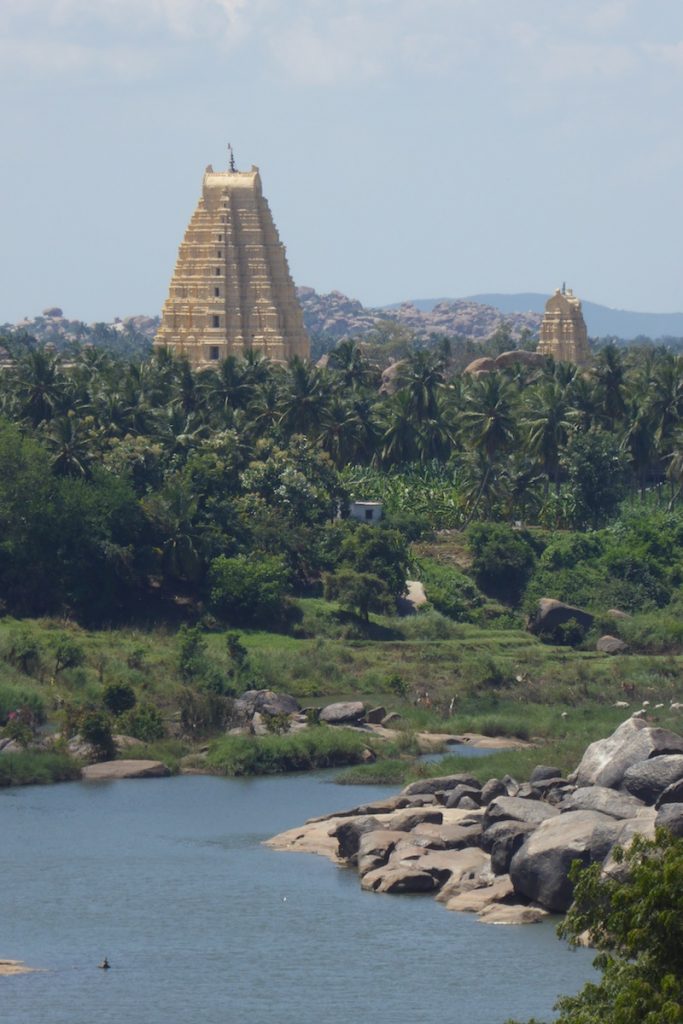
A fascinating, and beautiful, archeological area, and one of great historical and spiritual importance to India.
It was our next stop.
Being honest, Hampi isn’t somewhere I was really aware of before we started looking at where to go in India. And whilst it’s high in the list of ‘must visit’ destinations in the books, it’s not exactly on the tourist trail. The nearest airport is about 150km, and access is via a long bus or train journey.
So we hopped on a 5:30 (express – joke) train from Mysuru, and after 12 hours sauntering through the Indian countryside (and wondering if we were actually on the right train) we were deposited in Hosapete. The drop off station for Hampi about 15km away.
Now Hampi I think has historically been a bit of a hippy, and backpackers destination. Accommodation (more of that later) mainly consists of home stays and basic guest houses. Our guest house had arranged to collect us from the station, and I’d said the Helen that I thought there was a good chance that they’d pick us up in a tuk tuk.
Cue Ram, in his tuk tuk…
After shoehorning us and our bags in, and after an initially (typically) chaotic road trip, we arrived in Hampi Bazaar where the Gopi Guest House is located.
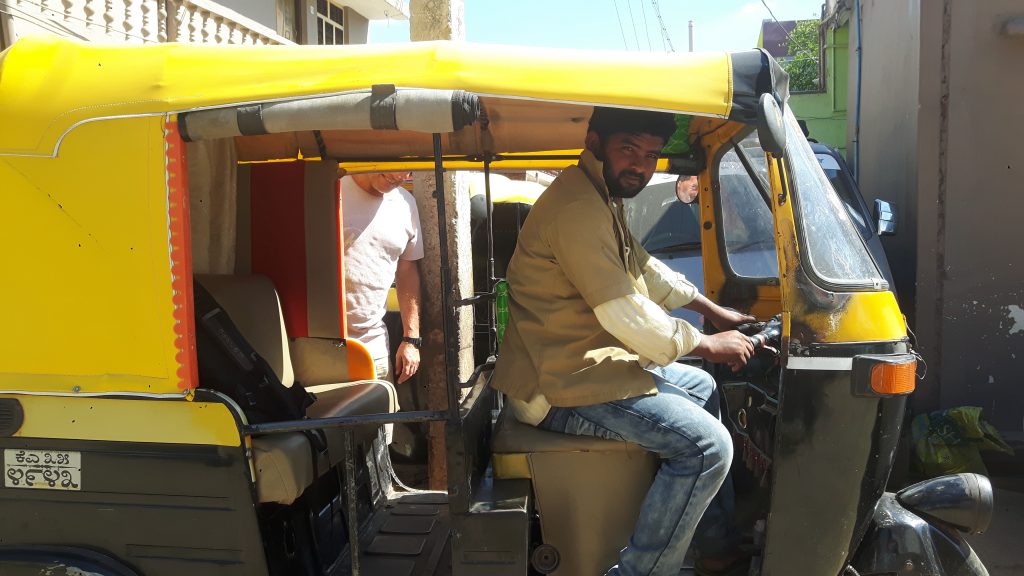
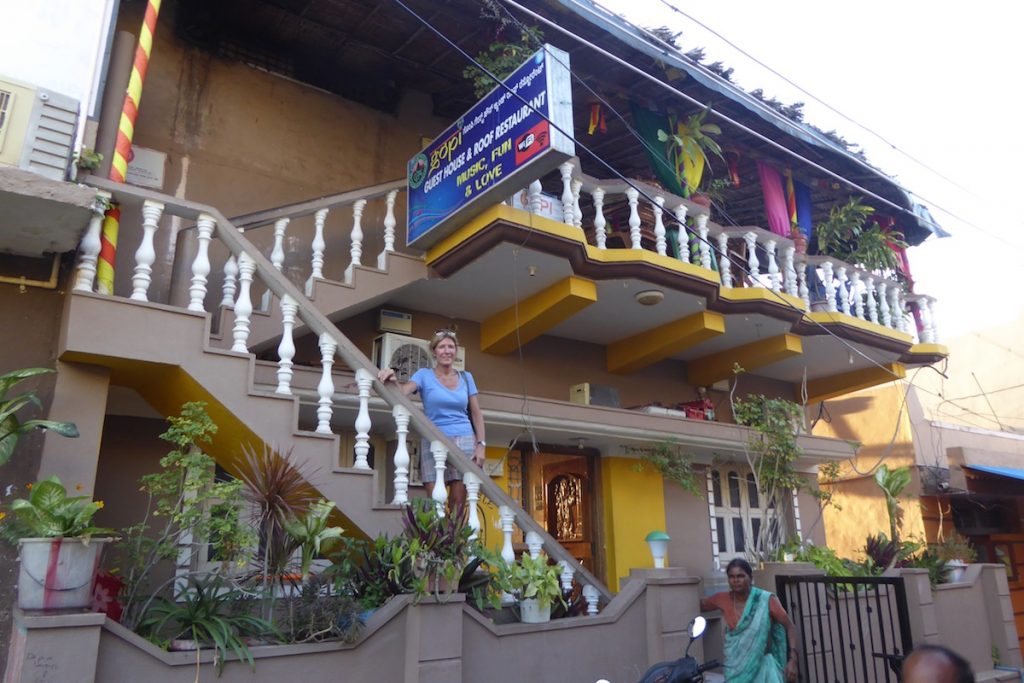
Did I say rooms were basic? To be honest, if you put someone being held at Her Majesty’s Pleasure in there, they would probably go on hunger strike or start to riot.
But it had been cleaned. Once.
On the plus side, the Gopi has incredibly friendly staff and a roof terrace where we went for a lemon soda, and to get our first proper look at the amazing temple only a couple of hundred meters away.
Ah, yes, lemon soda…
Due to the religious significance, and sacredness of the area, Hampi Bazaar is both totally vegetarian and dry! No cool beers for us here…before we finish with the Gopi, the food there was delicious. We only ate the Indian dishes and they were all really tasty, freshly cooked (vegetable pakodas straight out of the wok…. Mmmmmm), and incredibly cheap. Our evening meal typically cost 6 to 7 pounds. For both of us. And a lunchtime snack to share about £1.25.
Oh and the views were good too. Seeing, for the first time, the gopuram (gateway tower) of the Virupaksha Temple looming above the rooftops is not to be forgotten.
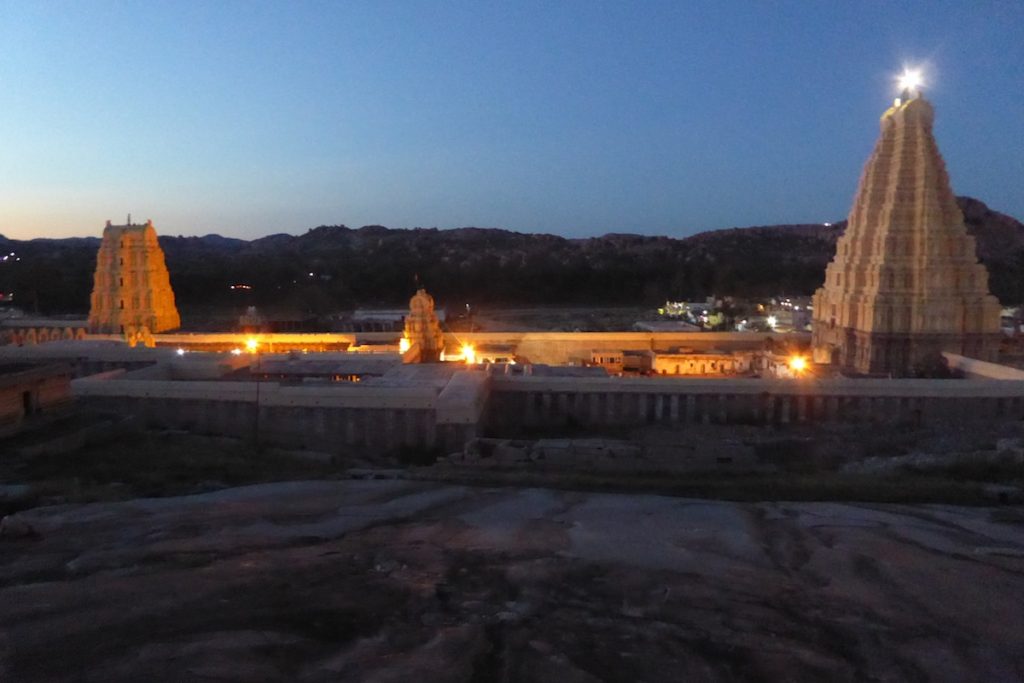
So why is Hampi so important?
Ok, another admission. I’ve realised how completely ignorant I was about Indian history, culture, religion and politics. Yes I knew they are a mainly Hindu nation, and that the British carved up the country in 1947 under Partition to create West and East Pakistan (which apparently was created as an acronym initially …..) and India. (East Pakistan was later to become Bangladesh). But not too much else.
The Vijayanagara empire grew in response to repeated attacks on the southern Hindu Deccan States by Muslims from the north. After a final defeat, Hampi was chosen in 1336 as the site for the new capital of the Vijayanagar. Over the next couple of centuries the Vijayanagara Empire grew into one of the largest Hindu empires in Indian history. By the 16th century it had grown to a population of half a million people, with busy bazaars, international commerce and merchants and gems from distant places.
In January 1565 the Sultanates to the north of Vijayanagara united and attacked the Vijayanagaran Empire. The Vijayanagara side was winning the war until two Muslim generals of the Vijayanagara army turned their loyalty to the Sultanates and captured and beheaded the King on the spot. This changed the course of the war, and the Sultanates’ army plundered Hampi and reduced it to the ruinous state in which it remains; it was never re-occupied.
Set over 36 sq km, there are over 3500 monuments to explore in Hampi. Every time you turn a corner or look up into the boulder strewn hills you see remains of buildings and temples. Or small statues, or reliefs carved into boulders. It would take months to see everything.
The ruins are divided into two main areas: the Sacred Centre around Hampi Bazaar, where we stayed, with its temples, and the Royal Centre, where the Vijayanagara royalty lived and governed.
Courtesy of hampi.in, here is a map that gives you and idea of the site. We were staying between points 4 & 5 on the map.
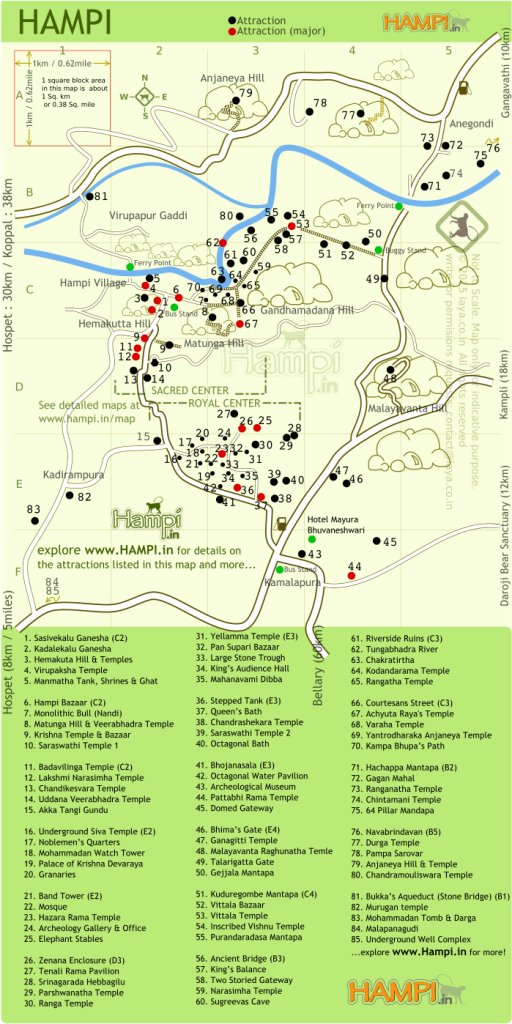
The only active temple in Hampi is the central Virupaksha Temple that dominates the skyline from all around the (tiny) village. As it was close by, it was the first place we visited with Lakshmi, the local temple elephant, inside. (Personally I found it a bit sad. Whilst well kept, she lives alone (originally in ancient Hampi there were over 50 elephants, stabled in the Royal Enclosure) and is little more than a performing act, putting her trunk on people’s heads for money. Something we didn’t indulge in.)
The rest of the temple is impressive. The 50m gopuram at the eastern end dominates, and inside the courtyard are a number of inner sanctums. The whole place was teeming with people and monkeys, who were thriving of the left over offerings from worshippers. When we were there, music in the form of drums, a trumpet and a clarinet was played to accompany a ringing bell.
Again we were encouraged to visit the inner sanctums by the locals.
A sign of the times. When in one of these inner sanctums a quiet musical note sounded. After a few seconds, the Holy Man pauses his blessing of the worshippers to answer his mobile hidden inside his robes!!!
Escaping the constant haranguing by the locals to buy guidebooks, rent scooters or take tuktuks we walked east through the ancient bazaar, lined both sides by stone columns, to the hill at the far end of the village.
Climbing the rocky path, the hubbub was soon left behind and after ascending a short while we reached the top of a rise and were awarded a spectacular, an unexpected, view of the Achyutraya Temple. Unlike Hampi Bazaar, it was deserted. Incredible to think that such a site had so few people exploring it.

And that is the story of Hampi. Escape the village and you get ruins and temples all to yourself. We took a rickshaw two afternoons to see the Royal Centre area and The Sacred Centre. Obviously, whenever you stop there are shacks selling water, coconuts, sugar cane syrup etc. but not crowds of tourists.
We saw so many sites, I won’t bore you with every one in detail. But here is a gallery of images that captures the flavour of the ruins.
I’m sitting in a hotel in Goa writing this and looking back only a couple of days I’m seeing Hampi in a different light.
From the moment we stepped out of our room the first morning I felt completely immersed in the place. Within seconds we had been offered a guide book by a young lad on the street. And that was before we’d scaled the external stairs to the restaurant above for breakfast! Everywhere people wanted to sell goods or services.
On the streets people were going about their daily lives around us. Holy men, bare chested, gathered together. Cows walked the streets, eating from bins or finding left overs. Out of the town, you’d find yourself literally in the middle of a herd of goats, the herder hurrying them past you. But other than that you could be completely alone.
Other than at the Achyutraya Temple, where the monkeys reign and you feel like an intruder as you walk the length of the huge bazaar with tens of them sitting in the shade of the ruins watching you.
It felt like somewhere from another century.
Across the river is a laid back area with a few guest houses bars and stalls. But not the high pressure selling of Hampi Bazaar. You cross on a small boat (or a coracle, which is obviously more expensive and an up sell opportunity). But only if there are enough tourists to pay (locals seem to go free). If they don’t want to go, the boat doesn’t run and you just have to wait. Another opportunity to chat with fellow travellers.
For me, the best of Hampi was walking along by the river, alone other than the odd tourist and herd of goats. Stumbling across ruins, scenes that would not be cout of place in an epic movie and just sitting alone in a temple accompanied only by the troops of monkeys that now own them.
And the sunsets.
Sitting on the Hemakuta Hill, amongst the temples, overlooking the village with music emanating from the temple below and the sun setting, casting golden light making the mountains glow orange, was one of the most relaxing few minutes I can remember. The setting, the view, the ambience. All were memorable. It was actually one of those moments that you wish would just carry on…
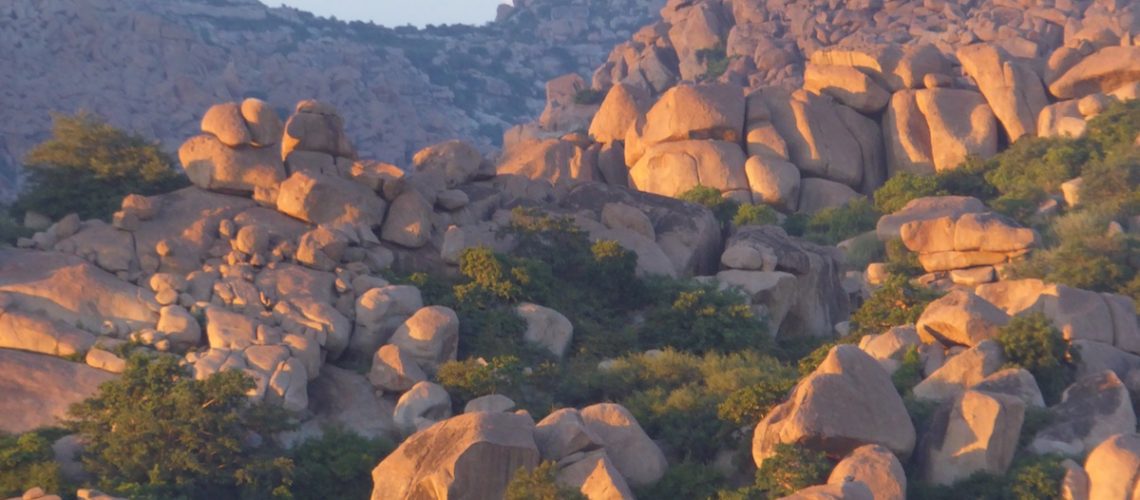






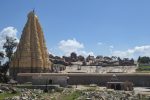
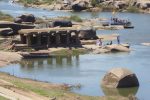




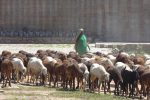


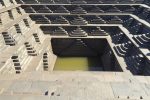
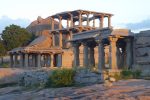
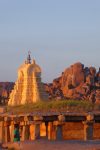

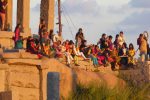


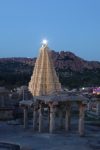
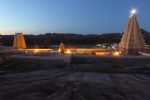

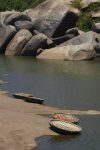

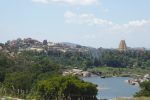
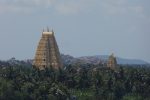
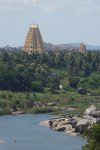

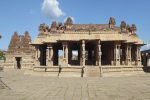
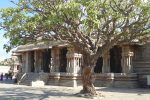
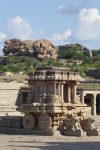
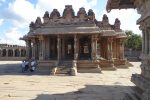
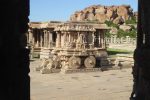

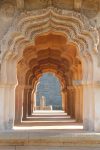
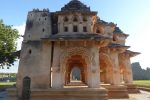
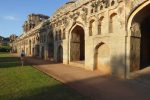
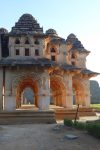
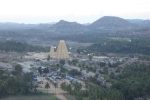
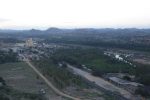
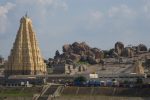
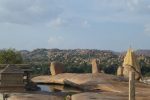
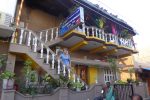
2 thoughts on “Boulder City 🇮🇳”
Pingback: View from a fish tank – The Big Tour
W0nderful evocotive descriptions Jon. You must have done so much research / reading. Cannot wait for the travel book! John Davies